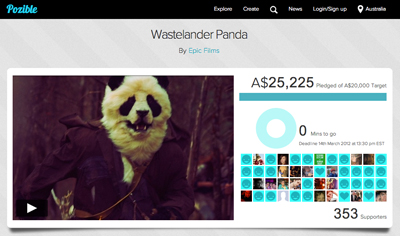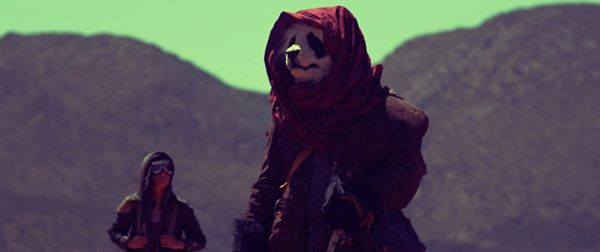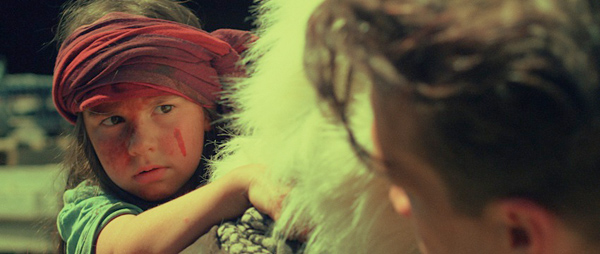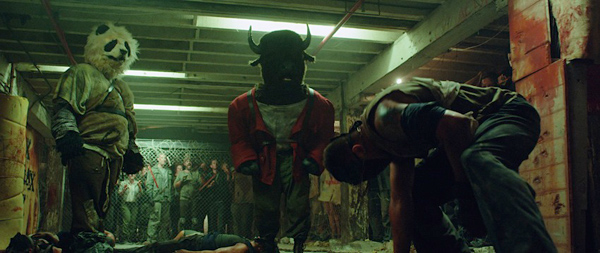by Kirsty Stark (Producer), Ella Macintyre (PMD) and Victoria Cocks (Writer/Director)
Part 3. Financing: Generating Certainty Online

Once we had proven Wastelander Panda was a viable concept and had an audience (through the success of the Prologue), we needed to find a way to finance future stages of the project. Still aiming to eventually take it to television, we looked at what we had done so far, and assessed the likelihood of getting funding, keeping in mind that we were first-time filmmakers. Speaking to experienced producers from the local industry, as well as looking at the questions being raised online from viewers, we realized that we still had a lot to prove before we would be able to attract any kind of significant finance:
– Did Victoria, as a first-time director, have the skill to maintain a narrative over a longer-form piece, rather than a three-minute Prologue?
– Was the tone serious? Comedic? What was the overall story of the series, and was it sustainable?
– Our audience existed, but would they pay for content?
Rather than trying to make a full-length pilot that would only show one strand of the narrative, we decided to continue to showcase our overall storyworld, and write three short films that each fit into the overall narrative we wanted to eventually tell. Each film would have a different tone, allowing Victoria to showcase a broad range of writing and directing skills. Each would introduce a relationship between two characters that would play a major part in the overall narrative, and each would appeal to a slightly different audience.
The first would be written to tell some of the back story, and to appeal more to women – the tale of a young human girl meeting the panda that would raise her. The second, and longest episode, would contain the most drama and suspense, giving audiences a sense of what a long form episode would feel like. Finally, the third episode would be designed to be most accessible to an online audience – being the shortest, and containing the most high-impact, action-packed content. All three episodes would then be given context both spatially and chronologically within a website that would enable audiences to further explore the Wasteland, its locations and characters, through a map and timeline.

Making this decision for our next stage of content meant that, if successful, we would be able to prove Vic’s directing ability, as well as showcase elements from the overall series. But we still needed to prove we had a paying audience. For this, we turned to crowdfunding.
Our crowdfunding campaign was run on pozible.com, as, being Australian, we were ineligible to apply for Kickstarter and finding a trustworthy US partner was going to take time we didn’t have. We capitalized on the attention from the Prologue, and also benefited from the fact that at the time in Australia (February 2012), crowdfunding was still a bit of a novelty. We got some attention for being one of the first filmmaking groups in the country to run a “large” campaign, with a goal of $20,000.
To us, it felt like a huge amount of money, so we tried to give our backers the sense that Wastelander Panda would happen, but that we couldn’t do it without their support. By placing the emphasis on the crowd rather than ourselves, we were able to think about who would be interested in Wastelander Panda, why they would want to put their money in, and what they would want to get out of the experience.

For some, it was the chance to have a small part in a project they loved. Others wanted to support us, but were more interested in the t-shirt they’d get in return. Over the course of the campaign we were conscious to appeal to all possible motivations and ended up raising over $25,000 – 25% more than our initial goal.
Creating a sense of inevitability took on a much bigger scale when dealing with the South Australian Film Corporation, our state’s government film agency. Despite the expectation that everything online can be created quickly and cheaply – especially when the words ‘web’ and ‘independent’ are mentioned – we knew that we would need a reasonable budget to create these three Wastelander Panda films at a standard comparable to the future series we hoped to make. Over a three-week shoot (including travel to the Flinders Ranges, a six-hour drive from home), the costs add up, so it was always our intention to approach the SAFC for funding after proving our market with our crowdfunding campaign.
While the financing system for films in Australia traditionally revolves around government grants, we believe that our method of creating ‘certainty’ online would work for any financier, whose job is all about the bottom line. We had to prove to them that we were capable of making a worthy product at high quality, that we had the team in place to do the job, that we had a plan and a budget in place, and that our audience not only existed but was willing to pay money to see what we had on offer.
The awesome thing about the Internet is that all of that information was available at our fingertips. We went into the stats for our Prologue video, Facebook page and crowdfunding campaign, and put together a numbers package of audience age, gender and location, the average amount donated, and a profile showing how they had accessed our content. From the “Advertise with us” sections on major websites that had featured the project, we pulled their user demographics, and monthly page views, giving an indication of the eager audience we had in place.

Knowing that financiers are business people, we did our best to think in business terms wherever possible, and tick all of the boxes necessary to prove the project and ourselves. Our application ended up being over 200 pages long. In hindsight, it was probably a bit excessive, but it definitely alleviated any sense of risk they may have had regarding our work ethic. They not only decided to fund us, but we were the first film project in Australia to receive funding from a state film agency by proving an online audience as ‘market,’ without a traditional distributor or broadcaster behind us.
Wastelander Panda is a live-action sci-fi project, written and directed by Victoria Cocks, that tells the tale of the last remaining panda in a post-apocalyptic Wasteland. The first three Wastelander Panda films are available at http://www.wastelanderpanda.com, in conjunction with an interactive map allowing users to explore the Wasteland. The team has now signed a co-production deal with Madman in Australia, and is developing further episodes with the Australian Broadcasting Commission and the South Australian Film Corporation. This series of posts by Producer Kirsty Stark (@kirstysan), PMD Ella Macintyre (@Ella_Macintyre) and Writer/Director Victoria Cocks (@VictoriaCocks1) outlines the process the team went through as first-time filmmakers to bring Wastelander Panda to its current funded stage.





